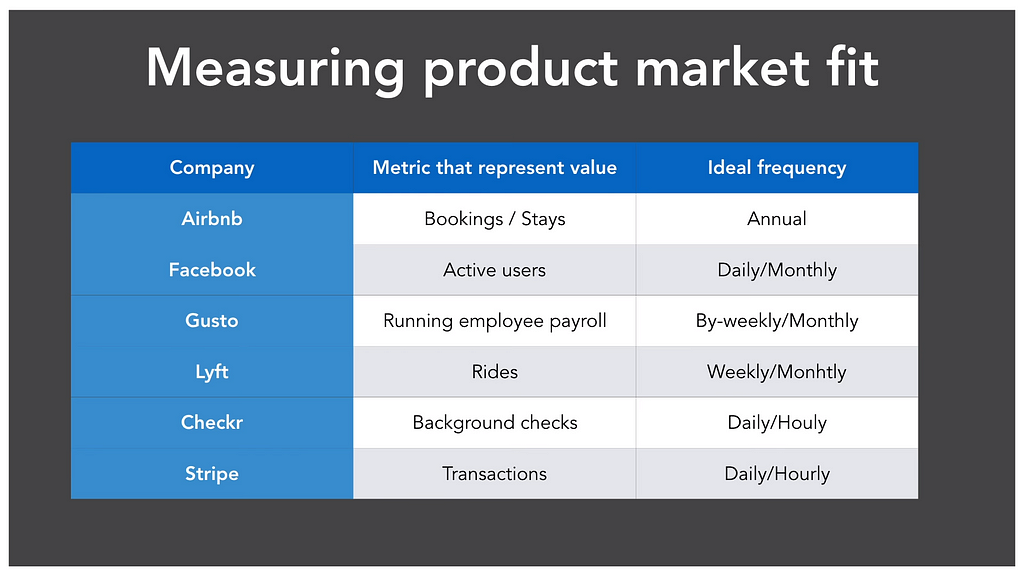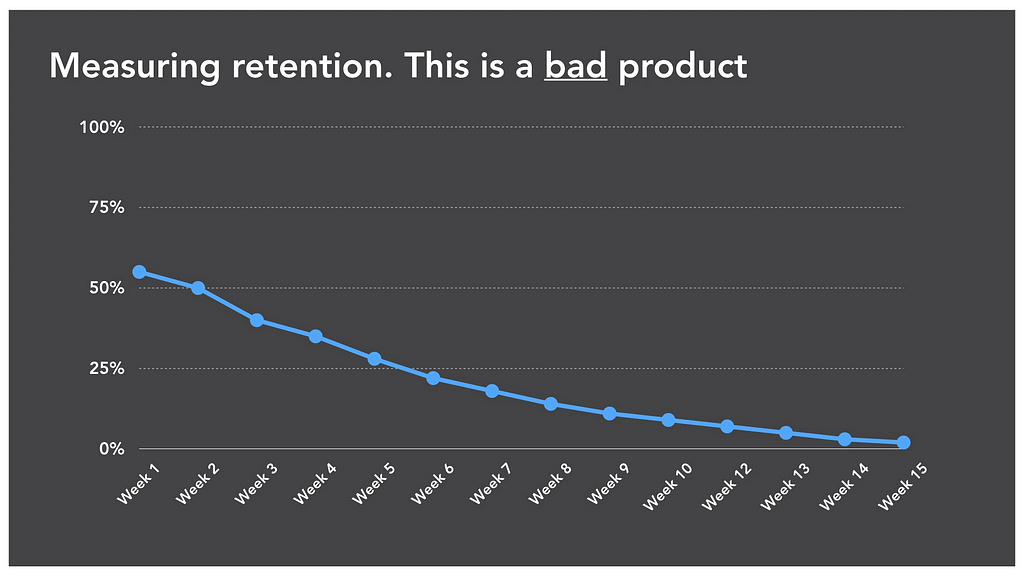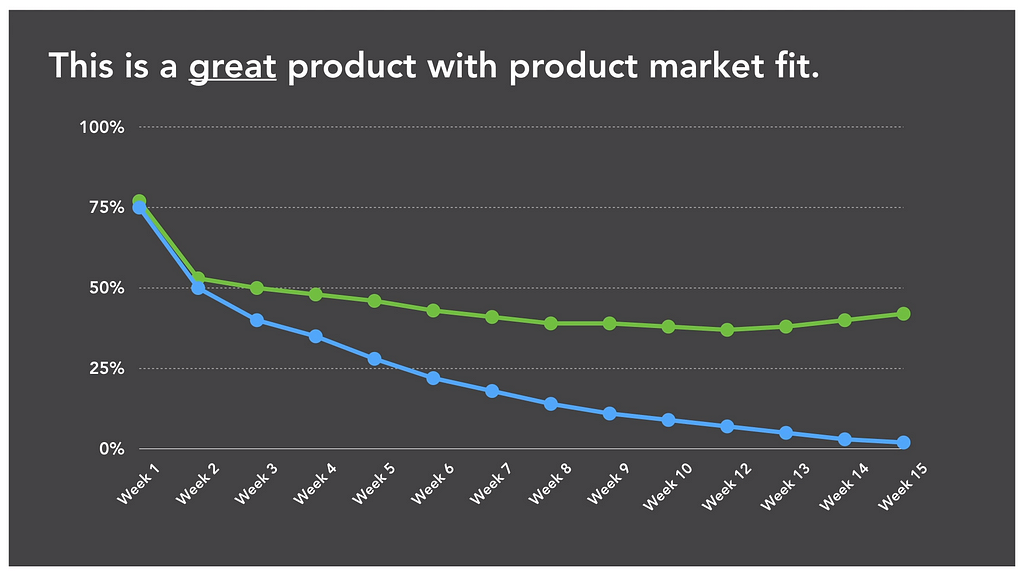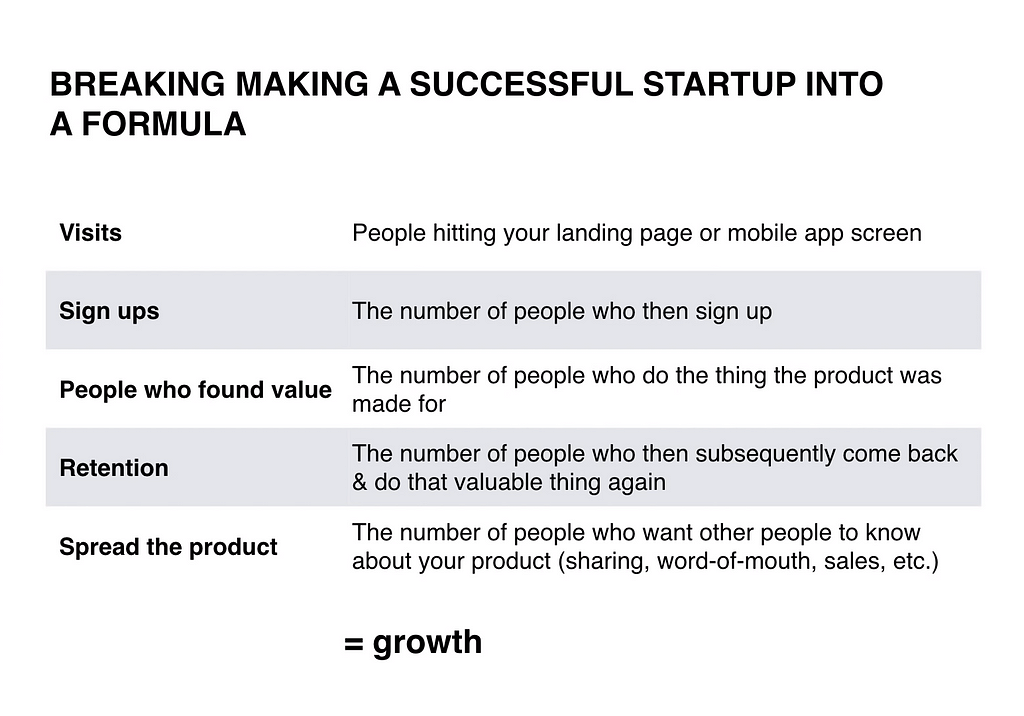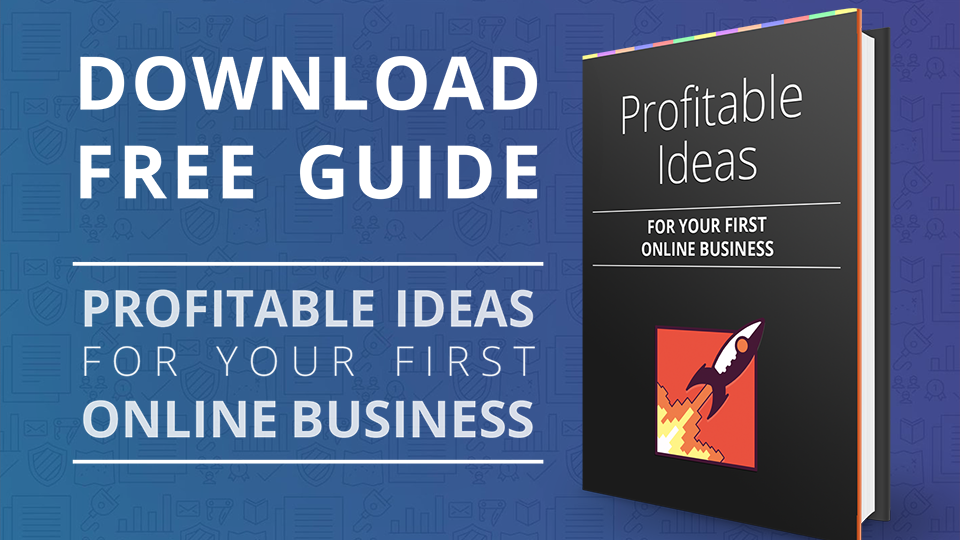Latest news about Bitcoin and all cryptocurrencies. Your daily crypto news habit.
Figure out what metric represents delivering the value to your customer, and what would be the ideal frequency for that to happen.
Facebook users should visit Facebook daily, Uber users should order rides weekly/monthly, Airbnb users should book apartments annually.
Then use that metric to measure your retention(how many users hit that target metric). If retention gradually drops to zero, your product is bad, if it flattens out at 10% it’s good, 50% is great.
Your product is a funnel. There are multiple steps between the first time user sees your product and the moment he hands you money. Each step causes some drop off in number of people who follow to the next step.
Startup growth formula:
Visits * Sign ups * People who found value * Retention * People who shared product = Growth.
Use these metrics to diagnose what slows down your growth, optimizing each of these steps increases the number of sales.
Key metrics you can optimize:
- Landing page conversion rate — how many visitors do sign up to your product after looking at your landing page?
- What is the ratio of single page visits to multi-page engagement? Do people check out the pricing page? (it’s a good indicator that they’ve found your offer valuable, and want to know how much it costs).
- Onboarding success. The “Aha” moment of your product is when the user receives the value for the first time and “gets” why your product is useful. Measure how many users perform the key action that delivers them value.
- Purchase conversion — what percentage of users is buying your product?
- Weekly/Monthly retention — how many people came back in 7/30 days to and did the valuable thing again?
- Daily active users.
- Monthly revenue churn.
Why revenue churn is important
If you have 7% revenue churn in a month (you lose 7% of paying users), it doesn’t seem like a lot (you still keep 93% of your revenue), but that adds up to 58% in a year. So if you’re a $1m/year startup, each year you have to figure out how to make up for $580k in lost revenue, and grow on top of that.
The more you grow, the harder and more expensive it will be for marketing to gain the amount of users you have lost.
Don’t keep pouring water into a leaky bucket.
Pick a north star metric
Optimizing too many things at once overly complicates things and causes distractions. Instead, pick one most important metric the success of your company depends on, and commit to maximizing that.
Growth channels to explore
User acquisition strategies depend on the type of product you have:
- Do people use Google to find the kind of product you’re offering? Try Content Marketing + SEO.
- Do existing users already share your product via word of mouth? Optimize Virality and Referrals (for example offer rewards for inviting new users).
- Can you make a list of all your potential customers? Do sales (like calling the companies in your niche).
- Do users have high LTV? Use paid acquisition (like Facebook ads).
Experiment
When your company is growing, the best way to find out which features are valuable is talking to users. And while it’s always important, at a certain scale the only way to find out if the feature or a tweak is successful is to run an A/B test.
Strategically plan features — forecast outcomes(value per effort ratio), prioritize the ones that have the highest leverage. Design experiments, and run A/B tests to test your hypotheses and find out the actual results of the changes you’ve made.
What I Learned From Startup School Lectures was originally published in Hacker Noon on Medium, where people are continuing the conversation by highlighting and responding to this story.
Disclaimer
The views and opinions expressed in this article are solely those of the authors and do not reflect the views of Bitcoin Insider. Every investment and trading move involves risk - this is especially true for cryptocurrencies given their volatility. We strongly advise our readers to conduct their own research when making a decision.
